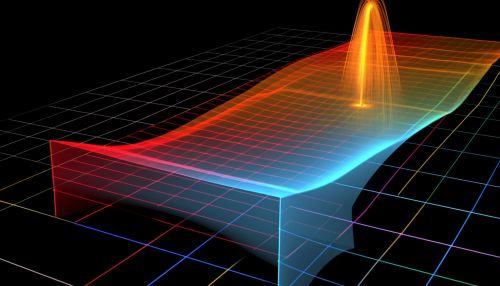Landau levels
Introduction
Landau levels are energy levels for a charged particle moving in a plane under the influence of a uniform magnetic field perpendicular to the plane. They are named after the Soviet physicist Lev Davidovich Landau, who first introduced these concepts. The Landau levels are a direct consequence of the quantization of the motion of charged particles in a magnetic field Quantum Mechanics.


Theoretical Background
The theoretical understanding of Landau levels is rooted in the principles of quantum mechanics. When a charged particle is subjected to a magnetic field, its motion is constrained in a way that results in quantized energy levels. This quantization is a fundamental aspect of quantum mechanics and is a direct result of the wave-like nature of particles at the quantum scale.
Quantum Mechanics
Quantum mechanics is a branch of physics that deals with phenomena on a very small scale, such as atoms and subatomic particles. It is a theory that describes the behavior of these particles in a way that is fundamentally different from classical physics. In quantum mechanics, particles are described by wavefunctions, which are mathematical functions that give the probability of finding a particle in a particular state.
The wavefunction of a charged particle in a magnetic field can be solved using the Schrödinger equation, which is the fundamental equation of motion in quantum mechanics. The solutions to this equation are the energy levels of the particle, which are quantized due to the wave-like nature of the particle.


Magnetic Fields
A magnetic field is a region in space where a magnetic force can be felt. It is produced by moving electric charges and is described by Maxwell's Equations. When a charged particle moves in a magnetic field, it experiences a force that is perpendicular to both the direction of its motion and the direction of the magnetic field. This force causes the particle to move in a circular path, a motion known as cyclotron motion.
In the context of Landau levels, the magnetic field is assumed to be uniform and perpendicular to the plane of motion of the particle. This simplifies the mathematical treatment and allows for a clear understanding of the principles involved.


Derivation of Landau Levels
The derivation of Landau levels involves solving the Schrödinger equation for a charged particle in a magnetic field. The details of this derivation are quite involved, but the basic steps can be outlined as follows:
1. The Hamiltonian for a charged particle in a magnetic field is written down. The Hamiltonian is the total energy of the system and is a fundamental concept in quantum mechanics.
2. The Schrödinger equation is solved using the Hamiltonian. This involves some mathematical manipulation and the use of complex numbers.
3. The energy levels are found from the solutions to the Schrödinger equation. These are the Landau levels.
The result of this derivation is a set of energy levels that are evenly spaced and depend on the strength of the magnetic field and the charge and mass of the particle. These energy levels are a direct result of the quantization of the motion of the particle in the magnetic field.


Experimental Observations
Landau levels have been observed in many different experimental settings. They are most commonly observed in two-dimensional electron systems, such as those found in semiconductor heterostructures. In these systems, the motion of the electrons is confined to a plane, and a magnetic field can be applied perpendicular to this plane.
One of the most striking manifestations of Landau levels is the quantum Hall effect, which is observed in two-dimensional electron systems under high magnetic fields. In the quantum Hall effect, the Hall resistance, which is a measure of the voltage developed across a sample due to a magnetic field, shows plateaus at values that are directly related to the Landau levels.


Significance and Applications
The concept of Landau levels has had a significant impact on our understanding of quantum mechanics and the behavior of charged particles in magnetic fields. It has also found applications in various areas of physics and engineering.
In condensed matter physics, Landau levels are used to understand the behavior of electrons in solids, particularly in the presence of magnetic fields. They are also crucial in the study of quantum Hall effects, which have important implications for quantum computing and other technologies.
In particle physics, Landau levels provide a way to understand the behavior of charged particles in magnetic fields, which is important in the study of cosmic rays and other high-energy phenomena.


See Also
References
1. Landau, L. D. (1930). Diamagnetismus der metalle. Zeitschrift für Physik, 64(9-10), 629-637. 2. Ashcroft, N. W., & Mermin, N. D. (1976). Solid state physics. Holt, Rinehart and Winston. 3. Prange, R. E., & Girvin, S. M. (Eds.). (1990). The quantum Hall effect. Springer Science & Business Media.
